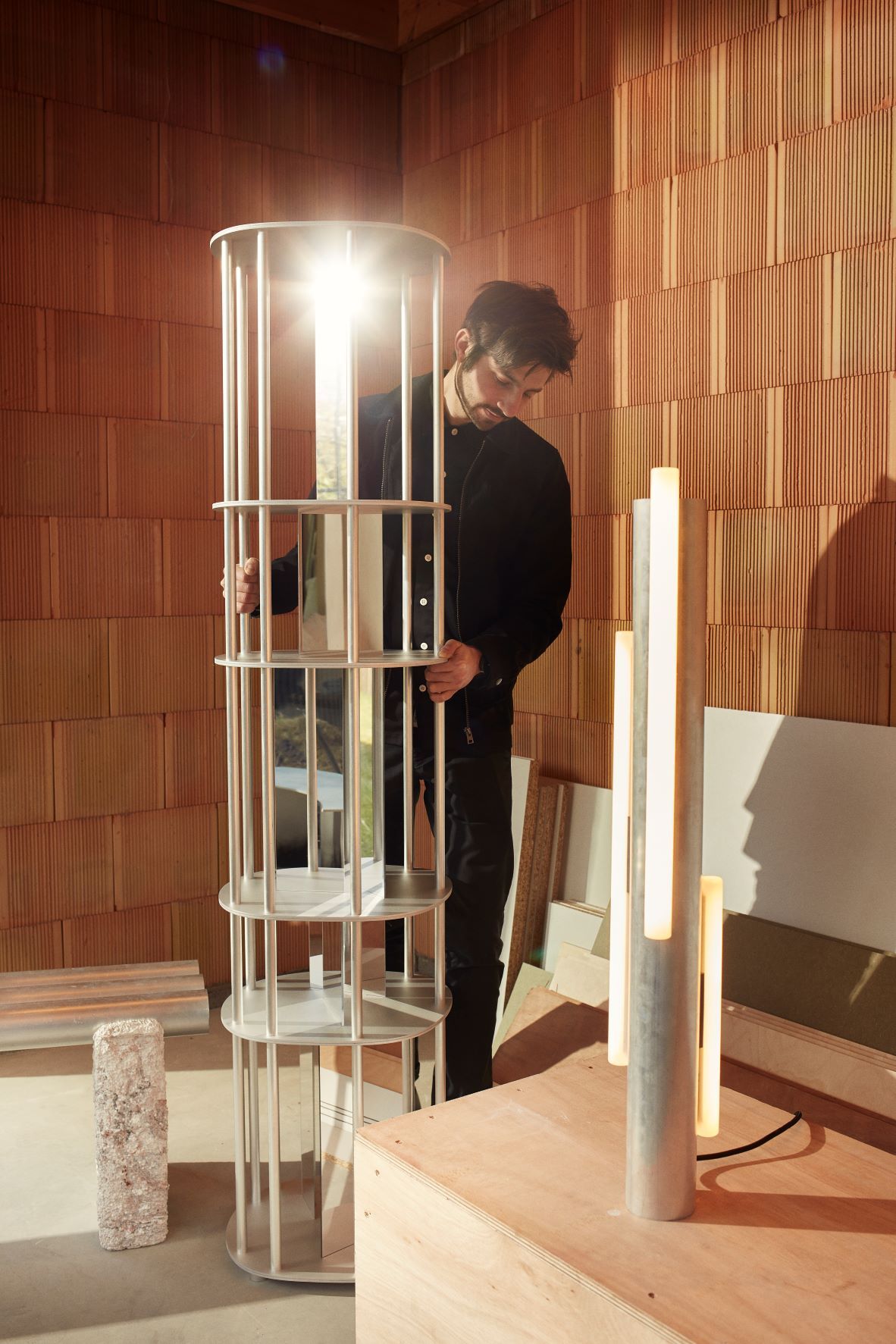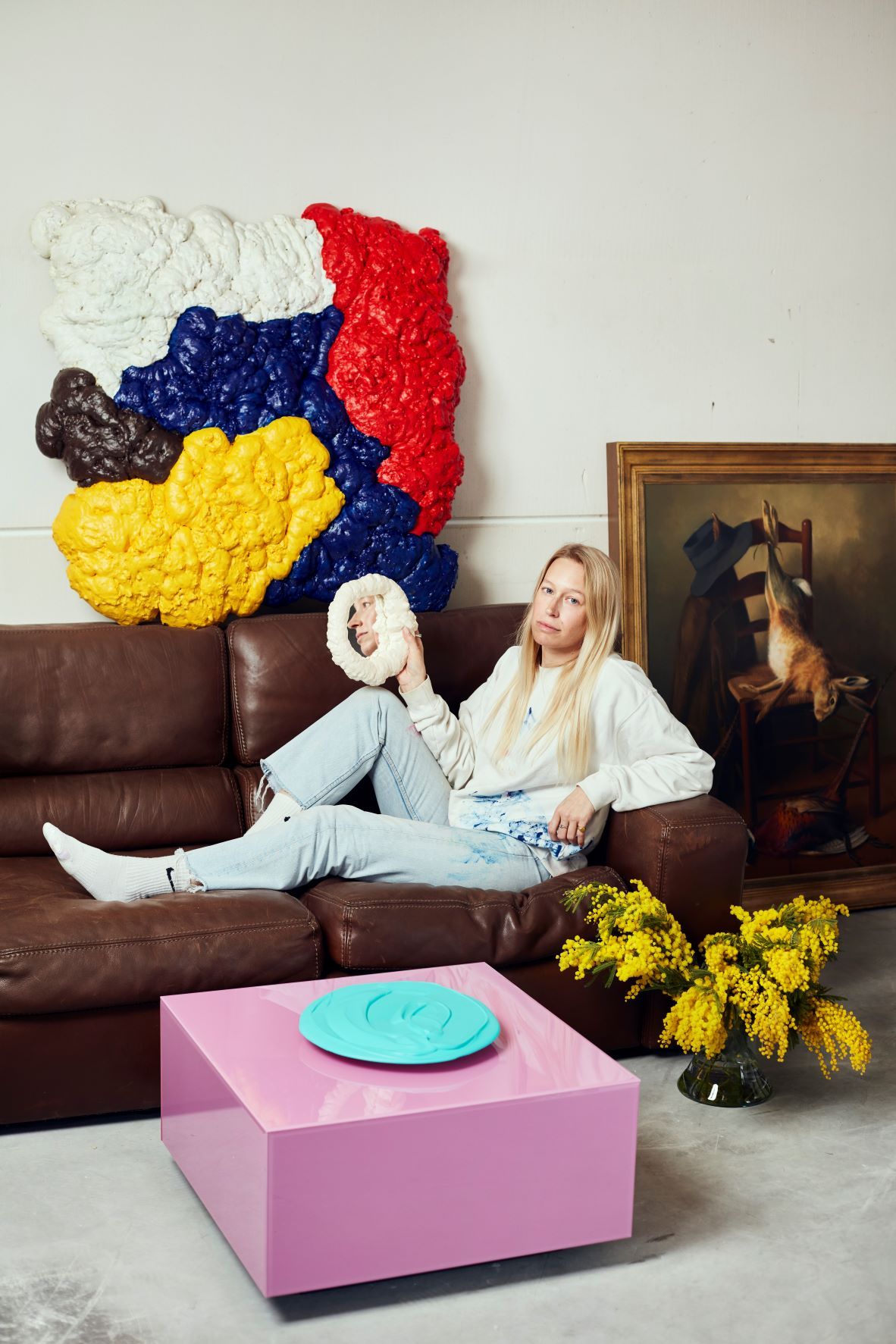You are more likely to expect building materials at a construction site than in an art gallery or on your wall. However, if you put basic building components in the hands of an artist, you get a whole different vocabulary and look. For ABSoluut magazine, we visited three versatile artists who give soul to natural stone, metal and plaster with great craftsmanship and creativity. What you get is love for materials and affection for the production process. But above all sheer happiness thanks to stacking materials.

Blog | Building materials in works of art

Conrad Willems’ block game
Conrad Willems' recognisable visual language refers to classical architecture. Using geometry, repetition and modularity as basic principles, he builds and stacks sculptures. His architectural sculptures are made of classical building materials such as natural stone, concrete or brick. For his 'Constructions' series, the building blocks take the form of the famous wooden toy blocks developed by pedagogue Friedrich Fröbel in the nineteenth century. "As a child I received my first set, by now I have gathered two thousand pieces. For me, they are like a sketchbook I start to work with. Every construction is first made with these toy blocks. Once the shape is determined, a construction drawing and installation plan are very much needed to stack the blocks correctly," Conrad points out.
"The fact that a sculpture is reduced to a pile of bricks when it is transported fascinates me. My constructions exist only by the grace of the people who make the effort to build them. That means a lot more to me than the mere aesthetic satisfaction. From the drawing, one can refer back to what I initially intended each time." Fascinated by shapes, materials and constructions, Conrad moves as a visual artist at the interface between building and sculpture. Like the Greeks or the Romans, he builds archaically, based on geometry and gravity. "I stack my blocks instinctively and without calculations. What stays standing in the small version, does so in the big one," says the visual artist with a smile.
And big they can be, Conrad's constructions. "Yet they remain loosely stacked, without fastening materials: not only for the pleasure of stacking, but also to keep them movable. This also gives each construction something unique. Finally, as a material, natural stone adds an extra layer of meaning: a sculpture in Belgian bluestone has a very different look and historical reference than one in, say, Rouge Griotte marble."

Fractall’s scars
Designer Arne Desmet embraces production processes. He does not erase manufacturing traces, but shows them in their pure form. With their industrial touch, his tables, chairs and lighting know how to please. Under the name Fractall, Arne links precision production processes to randomness and illustrates that we should dare to look differently at the materials surrounding us. "I work for instance with hot-rolled steel whose aesthetic value is even questioned by the manufacturer because of so-called defects. But it is precisely the uncertainty of colour variations and stains that interests me," confesses Arne, who embraces the scars of production and values patina.
A certain duality that unites the rational with the natural recurs regularly in his work. "This ambivalence refers to the fractal structures that are interesting to me, mathematical figures that look so natural that you hardly realise there is a certain formula behind them. As a starting point, the materials I work with are rather industrial. I counter that through their design and processing. Aluminium is widespread, with various processing possibilities, but it becomes so much more interesting to me when you work with it in a way people don't expect. It provides a different appreciation of an essentially elementary material."
"Whether it is just a bent steel plate? If you define it that way, a painting is also just a canvas with some paint on it. Then it is not that valuable “an sich” either. But what is done with it and the idea behind create the (poetic) value. Aesthetics are all around us. With patterns you clearly see, but will not notice any longer in the long run. I get inspired by them in order to break up the reasoned and machine-like atmosphere. Hence, those patterns become interesting, with more appreciation for the authentic material," concludes Arne.

Lieselot Wille’s monochromes
Lieselot Wille's visual works of art can best be called pasty paintings. Her material art with often large monochrome surfaces has its origins in the shop windows she is decorating for fashion boutiques. Her colourful three-dimensional designs are real eye-catchers. Lieselot is fascinated by colour, and the do-it-yourself store Brico. "For me it's almost a candy shop, where I can spend hours looking. I work with the basic materials I find there. They are expressive, but above all they are very appealing to me," Lieselot confesses with pride.
Lieselot makes matière reliefs in which the action and the material remain visible. "I love creating volume. In museums I am also drawn to works with thick layers of paint. I want to make pieces of art that exude the same volume. I have been working with industrial foam for some time. I apply it to canvas and then colour it with primary and bright areas. How this particular material takes on a whole new life and connotation does indeed surprise some people. Not everyone can see through the material, so it is sometimes considered inferior. But a line of oil paint or acrylic on a sheet, is also just a line on a sheet. I want to offer a different perspective."
Lieselot is always looking for new materials to bring her abstract shapes to life. "Working with plaster is a material feast for me. I love to modulate shapes, materials and structures with my hands. I rely on my feeling when I am working and I use a plaster knife to create shapes and flowing lines. I strive for the perfect imperfection, where you see something different in the shape each time you look at it. The choice of pigment is often a tough challenge, because sometimes you don't know how a colour will react. "The most important thing is that colour and object become one," Lieselot concludes.
SAVVY x ABS BOUWTEAM: ABSoluut magazine.
Check out our other magazines.